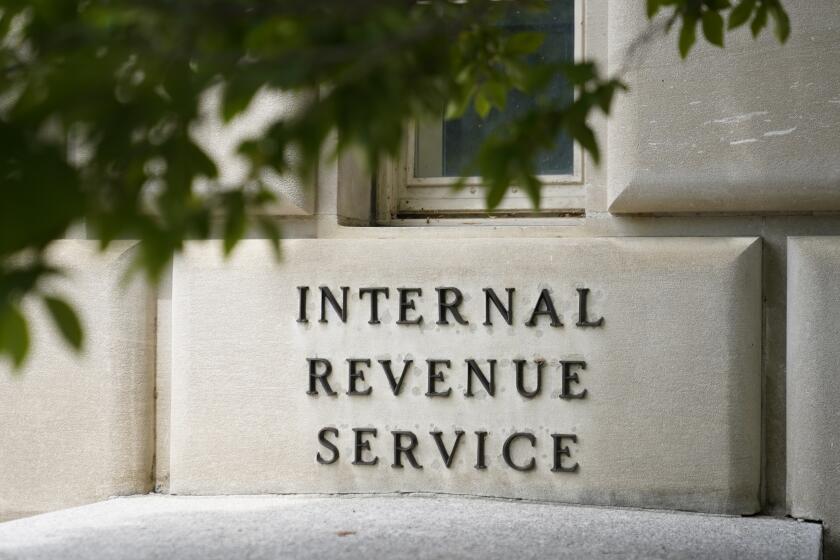DocuSign’s biggest backer turned $17.5 million into $687 million
- Share via
The biggest winner of DocuSign Inc.’s long-awaited initial public offering isn’t well-known. The venture capitalist has never appeared on a Midas List, and his company isn’t one of the venerable investment firms on Sand Hill Road in Silicon Valley.
But 12 years ago, Pete Solvik made a bet on a start-up that enables people to securely sign contracts online. So sure of the idea, he kept buying shares over the years for his firms, Sigma Ventures and San Francisco-based Jackson Square Ventures, where he’s a partner. On Thursday, DocuSign went public at $29 a share, and the stock surged as much as 41% on Friday before closing at $39.73, a gain of 37%.
For the record:
4:30 p.m. April 27, 2018An earlier version of this article said that DocuSign co-founder Thomas Gonser had been selling shares for years to the company and to Pete Solvik, and that the most recent transaction was a $13-million sale to Solvik. In fact, Gonser had been selling his shares to the company, and the most recent transaction was a $3.3-million sale.
Solvik’s funds hold the biggest stake in the company, with a combined 13% now worth $687 million.
Solvik’s commitment to the San Francisco software company outlasted that of even co-founder Thomas Gonser, who now holds just 1.5% of DocuSign’s shares. The payoff for Solvik and other investors didn’t come quickly or easily. Most start-ups go public or get bought in about half the time. DocuSign changed strategies a few times, shifting the sales focus from small to large customers and expanding from real estate customers to other industries. Results in those new sectors took longer than expected to materialize, Gonser said. “We expected crazy growth. It didn’t happen,” he said.
Another factor that complicated decision-making was DocuSign’s unusually large board. The company had entertained acquisition discussions with IBM, Microsoft Corp., Oracle Corp. and other potential suitors. But the directors, a dozen in total, frequently disagreed, people familiar with the interactions have said. Gonser and early investors would push for a sale, while later investors advocated for an IPO. This dynamic intensified during the company’s fraught search for a chief executive — a 15-month process completed last year with the hiring of Dan Springer. Solvik, who had known Springer since 2004, led the CEO search.
Solvik, 59, has quietly worked his way around Silicon Valley for decades. He worked at Apple Inc. in the early 1980s and at Cisco Systems Inc. in the 1990s, where he rose to chief information officer. He left Cisco in 2002 to become a venture capitalist. Solvik joined Sigma Partners, based in Campbell, Calif., on the outskirts of San Jose. (Whether the location qualifies as part of Silicon Valley would be a matter of some debate.)
Before DocuSign, Solvik had few deals of note. His most successful investment was in a data company called Topio, which NetApp Inc. acquired in 2006 for $160 million. To accumulate a 13% DocuSign stake for his funds, Solvik spent $17.5 million. He declined to comment, citing legal restrictions ahead of his company’s debut.
DocuSign’s backers include some of the technology industry’s more recognizable names, but their wins won’t be substantial. Kleiner Perkins Caufield & Byers and Alphabet Inc.’s GV each invested later in DocuSign’s life and own less than 5%.
Gonser, the last of the three founders to leave, has been reducing his DocuSign holdings for years. He still owns $83 million of stock but relinquished an operational role at the company more than two years ago to do venture investing; he is now a partner at Seven Peaks Ventures in Oregon. He had been selling shares for years to the company. The most recent transaction was in 2016, when Gonser sold $3.3 million in stock at half the current price.
UPDATES:
2:05 p.m.: This article was updated with DocuSign shares’ closing price.
This article was originally published at 12:40 p.m.
More to Read
Inside the business of entertainment
The Wide Shot brings you news, analysis and insights on everything from streaming wars to production — and what it all means for the future.
You may occasionally receive promotional content from the Los Angeles Times.










